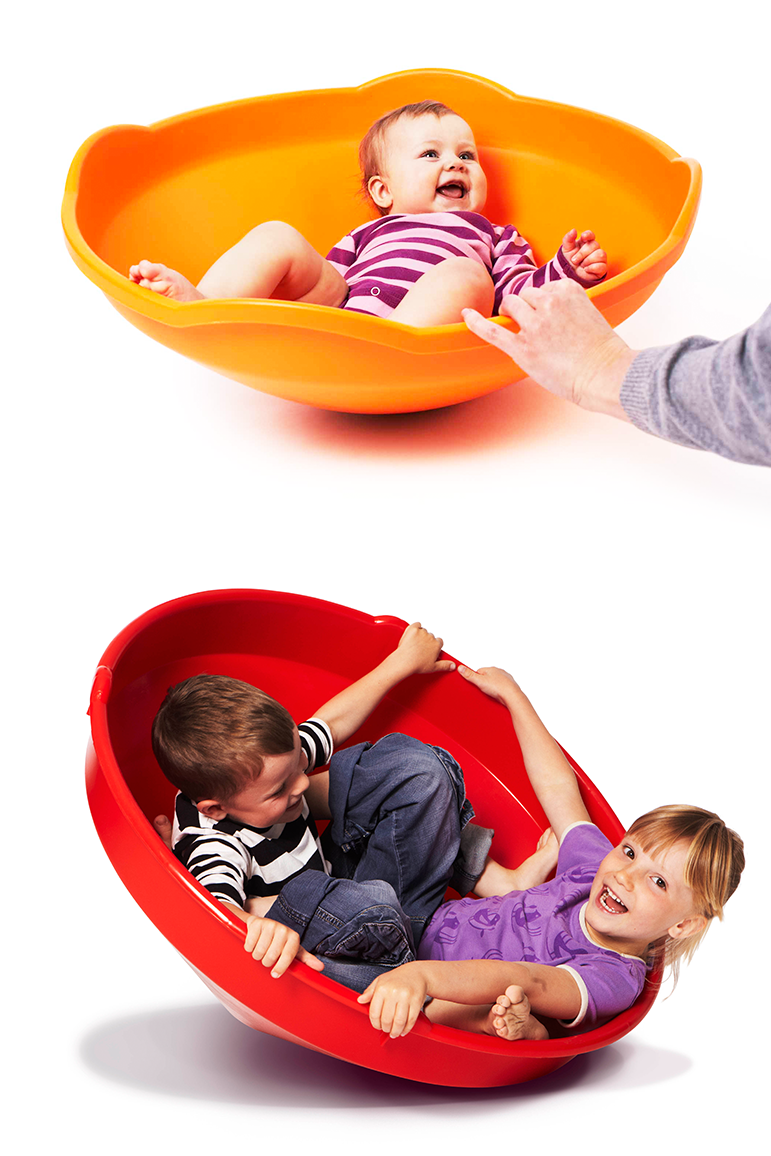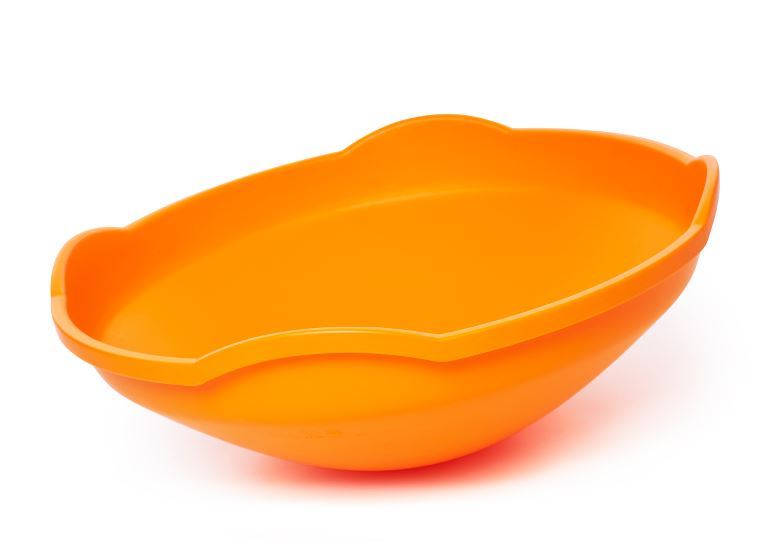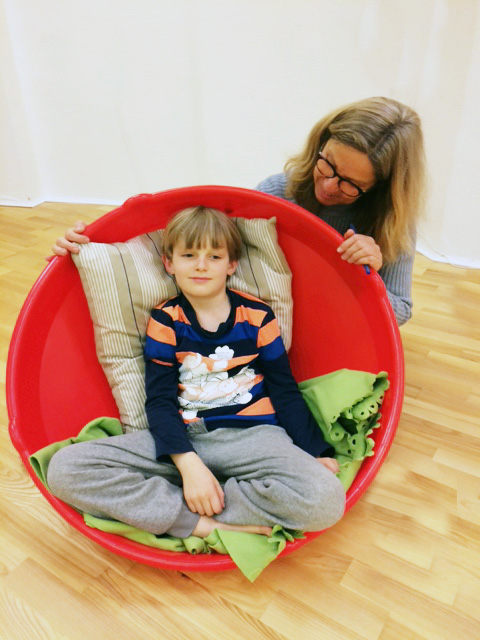
When we cradle an infant in our arms or rock them in a cradle or pram, the child will often settle. The rocking movement is a gentle form of vestibular stimulation that has a soothing effect.
The vestibular receptors are loaced in the inner ear. They register acceleration, rotation and the perpendicular. Via our sense of the perpendicular we perceive whether our body is upright.
Vestibular stimulation is effective from the foetal stage. The unborn child's vestibular receptors are stimulated passibely by the mother's movements. The foetus also has active vestibular stimulation via his/her own movements.
The child's active movements in the womb tell the mother how the child is doing. If foetal movements disappear or become too violent or continuous, the mother will ususally interpret these as warning signs, and she will seek medical attention to check if her unborn child is OK. Once the child is born, we react to violent movement by consoling the infant with cradling. Cradling is a non-verbal response that we use to console and regain contact with the child.
Vestibular stimulation regulates muscle tension. While gentle, rhytmic stimuli make us relax, rougher stimuli tend to make us tense. In other words, vestibular stimulation is important. It helps us to learn precisely how much muscular tension is needed to perform a given activity. Registering vestibular stimuli is therefore also important for our balance.






